Marc MacYoung?
Dianna Gordon MacYoung?
Animal E-list
Crime Avoidance Lectures
Crime Blog
Colorado Classes
Contact Us
FAQs
Hosting A Seminar
Crime Prevention
Expert Witness
Knife Defense
Law Enforcement
Martial Arts
Military
Movie Consulting
Women's Self-Defense
Links
Our Linking Policy
On-line Store
Train with MacYoung
Testimonials
Terms of Use
Topics
of Interest
On this page:
Complicating factors |
Getting the
most bang for your buck |
Learning how to safely work in close |
Further Resources
When it comes to whether or not your control techniques work or fail miserably, there is no factor more important than distance.
To use a rather weird analogy, the correct distance needed control a violent perp is a "Goldilocks and the Three Bears" issue. This distance is too close, this is too far, but this distance is just right. While that may sound like a flip answer to a serious issue, it does cover the important elements of both the problem and the solution. You are the one who has to know what is 'just right' and how to get there.
A major problem with current training is that it fails to ingrain both the understanding of "You HAVE to be here" and how to achieve that goal. This is not something that can be glossed over in training because the instructor is trying to get through a curriculum. Your understanding how to control distance is a critical component of the success -- or failure-- of the tactic. Without it, you're going to find yourself on the ground and wrestling with the guy.
Controlling distance is what we call a "Mountain Man Rabbit Stew issue." That saying comes from an old mountain man cook book recipe. The recipe begins: Step one, catch a rabbit. In these days of supermarkets and butchers, people presuppose they have the rabbit. However, a mountain man, operating alone in the wilderness couldn't, he had to catch it, other wise all those other steps were useless. In the same vein, a lot of training assumes that you already have a rabbit. So they don't spend much time focusing on how you are supposed to achieve step one. The fact is you are like that mountain man, you're out there alone and nobody is going to hand you a rabbit of correct distance. If you want to eat, you have to learn how to and then catch that rabbit on your own.
When you can do that, and you automatically do it every time, then you have ingrained controlling the distance. When you have this skillset, putting someone down is a piece of cake. That's because specific techniques are designed to work at specific ranges. In that range they deliver all kinds of bang for the buck. Outside of that range, however, it's going to turn into a struggle of muscle and size. As so many restraint attempts develop into.
When teaching about controlling the distance, we are constantly asked by officers, "What if I can't get there?" That question, demonstrates to us how glossed over and underemphasized this element is in most training. It is, literally, the equivalent of someone asking in a shooting course, "What if my gun isn't loaded?" This is why we are warning you about training that pre-supposes the rabbit has been caught. If the instructor isn't spending time getting you to ingrain this element, you're being set up for failure. The more you focus on controlling distance, effective body movement and moving the better and more effective your defensive/control tactics will be.
Complicating factors
Two major influences must be factored when addressing the issue of controlling
the distance. The first is
gun retention. Many officers have serious reservations about closing with a
suspect because of this very real problem. The best grappling/submission
techniques are useless if the officer refuses to close because of the danger of
being shot by his own gun.
From the officer's standpoint, there are just too many things to go wrong if he closes. Unless you are first taught what you need to control someone at that range and then are drilled until achieving them becomes an ingrained habit, there will be a strong reluctance to close. Your lizard brain cannot spell d-e-n-i-a-l. If you don't have faith, down to your bones, that a move will work, you aren't going to fully commit to it. No matter how departmentally approved or promoted it is.
The second influence is the polar opposite: It is the raw and unpleasant fact that you cannot successfully control someone at a distance. Unless you are REALLY good at creating very specific conditions, both the laws of physics and the laws of bio-mechanics make it really difficult to control someone at that range. What range you might ask? Why, far out enough to keep him from grabbing your gun, of course.
So here's the problem in a nutshell, too close and you risk getting your gun taken away, too far and the technique doesn't work. Any wonder why officers hesitate to move?
Getting the
Most Bang for Your Buck
We mentioned earlier that specific moves are designed to deliver most power at
specific distances. This is called Range. And it is one of the three core
element of effective generation and delivery of
power. As we also said range is a Goldilocks and the Three Bears issue, too
close or too far and there is a dramatic power loss. The
Range
section of the Power page will give you an introductory look at what
you need to be in the right range.
What we want to point out here is the negative effects of not understanding Distance, Range or their effect on power delivery. In other words why you need to be in the right range. Before we do that though we'd like to tell you about the Fish's eye. The fable is there was an archery contest in Ancient China. As the contest had progressed, the target had been moved further and further away. The final three contestants were all shooting at the same target, a fish. All three arrows, hit the fish's head. The judges, not sure how to determine the winner asked each contestant what he was aiming at. "The fish" answered the first "The fish's head" replied the second. "The fish's eye" answered the third. He wad declared the winner. The moral of the story is that you are only as accurate as you aim for. How does that apply to what we're talking about? We'll get to that in a bit.
Simply stated: A correctly ranged and properly executed move WILL deliver force into an opponent. Furthermore that force WILL have an effect. The laws of physics guarantee this. What they do NOT promise however is exactly what those results will be. Just because you hit someone as hard as you can, doesn't mean you'll knock him out. But that doesn't mean that the blow didn't have an effect. Not reaching a specific goal doesn't mean that the move is a failure. -- especially if you weren't aiming for the fish's eye.
Getting specific results is very much a result of how specific you are. Just hitting someone as hard as you can't probably won't knock him out. But if you hit him as hard as you can, in a certain place, at a certain angle and in a practiced and effective manner, the odds are much, much better that you will knock him out. But even if you don't hit the fish's eye, he's not going to be tap dancing any time soon. The more exact and effective your strike, the more wobbly kneed he's going to be. The laws of physics and bio-mechanics guarantee that. The problem is that takes practice to be able to do under stressful situations.
The problem is that achieving the right range is not just one of those fish's eye ideas, but it has major influence on how much faith you have in that move's effectiveness. If you're at the wrong distance, you're not going to deliver power. At least not nearly enough to get the job done. If you don't deliver power with it, that move's going to get filed in the round file with all the other spazo moves the department wants you to use. The ones that get you slugged every time you try to use them. In short, you're not going to trust the move. This creates an entire string of catch-22s. First, when you don't trust it to work, you're sure'n hell not going to spend the time and effort on ingraining those elements that will make it work. Second, if you can't make it work the way it's supposed to, when and if you do try to use it, you're more likely to injure the the suspect by forcing the move. Third trying to overcome someone using a technique at the wrong distance will require that you compensate using muscle -- and if you are facing a bigger stronger opponent that's another entire list of problems. Forth, it is far more likely that you will revert to moves -- that from previous experience -- you know work. This, even if they don't have the best track record. A move that works only 60% of the time is more reliable than a move that you've never been able to get to work outside the training hall. Fifth, those moves that are more likely to work are more likely to get you into trouble for using them.
Odds are you were never told about distance in any more than a passing manner. In a long string of information it was just another factoid. If that were the case, then you can pretty well bet that you weren't taught how to use controlling the distance to ruin his ability to attack you. If you weren't taught that, then we'll give you odds -- and still take your money -- that you're moving into positions that allow him to better resist your attempts to control him.
This is why taking a new, and in-depth, look at the importance of distance for defensive tactics needs to be on your agenda. Pester your training officer to have a serious sit down discussion
Learning how to safely work in close
Unfortunately, unless you take specific steps when you are close in, there are
more problems than just only gun retention. These problems greatly
increase the hesitation many officers have about closing. After all, who wants
to rush into a fight?
One of the major issues is that if you are close enough to control his body mass, he can control yours, too! The same physics and structural weaknesses apply to you as they do to him! As many officers have discovered, when human beings fall they have an instinctive impulse to grab onto the nearest object to save themselves. Unfortunately, that object happens to be the officer. If he is close enough to wrap his arms around you or effectively grab you, he will go down, and he will take you with him.
This is why moving directly into an opponent isn't the brightest idea. However, with a little practice you can move into a position where it's much harder to grab you. That and a few small tricks about changing his orientation, make it really hard for him to effectively grab onto you to keep from falling. It also makes it extremely difficult for him to grab your gun before he meets Mr. Earth.
The problem with all this is that while it is easy to do, it is not specifically taught. Furthermore, like the importance of moving into the correct position learning how to control the distance while closing, delivering force into him and making sure he can't grab your gun are presented as more meaningless factoids in a larger stream.
Let's give you something that you can start using now. To start with, there is a little known fighting range, it's called "in-fighting." (Although martial artists often call it "trapping range"). In-fighting range is in-between standing back and throwing punches and kicks and rolling around on the floor with someone. Unfortunately most instructors consider this range to be "transitional." In fact, they look at it like a small town that you pass through to get to Grappling Wisconsin. What they don't realize is that a good in-fighter is like that small town mechanic that you meet when your car breaks down. Which doesn't sound too bad except an in-fighter will make sure you break down. He's never going to allow you back out of his range and he isn't going to go to the ground with you. A good in-fighter is someone you don't want to have him lay his hands on you.
In-fighters know the most effective way to deliver your moving mass (body weight) into someone without the drawbacks of grappling is at the length of your upper arm. We're talking about using what's from your shoulder to elbow to keep him right were you want him. And that means 1) at a manageable distance (so he's going to have a hard time grabbing your gun), 2) Where you're applying constant force so he can't get his legs back under him 3) so you can move him to where he's going to meet Mr. Gravity (who will introduce him to Mr. Earth) and 4) so you don't have to be close enough to smell what he had for lunch. While the last one sounds flip, it seriously reduces the risk of fluids transfer.
By simply holding your arm out and putting your elbow on his chest, you have established a distance that he cannot get closer. And if he tries to back away, you can walk forward to maintain. And if you advance faster than he can backpedal, you're going to over balance him or spin him (especially if you aren't square into his chest but one side or the other.)
This shorter position allows you to bring to bear your momentum and gives you immediate feedback as to how much force you are applying. What's more there are less things to bend and flex than there is between your shoulder and wrist. That means more of your force is being delivered rather than being eaten up by the "shock absorbers" of your elbow and wrists flexing. It's a solid bone from your elbow to your shoulder. From this compromise range, you can break his balance, control how he will fall, determine how hard he will land, keep him from taking you with him and with a little practice, drop him directly into a cuffing position. Furthermore, it works stepping forward and backwards and against a moving or stationary suspect.(1). From here you do your takedown
A prime example of the effectiveness of this range is how it works against an open-armed rush. In some circles, this is called a "longhorn tackle" or "bull rush" because the person puts his head down, spreads his arms and charges, just like a longhorn bull. Standard tactics advocate avoidance. Unfortunately that is more difficult than it sounds. These moves often come from point blank range, thereby giving you little chance to side step. Even if you avoid his head and torso, his arm will "hook" you. When this happens, his forward momentum will cause him to pivot into you while dragging you back into the crook of his shoulder. If you’ve ever been tackled or knocked down in this manner you will immediately recognize what I am talking about. The perp gets a solid hold on your torso, and you both end up going down -- no matter how solid your stance.
Instead of trying to "dig in" and meet his force with your body (which is exactly what he is trying to accomplish), create a buffer that will destroy his attempt to close with you. You create a combination airbag and shield to keep him far enough away that he can't control you, but that you can still control him. Put your hands out in front of you about face high and shoulder width apart. Keep your elbows down in front of your body. If you are familiar with it, this will look like the muay Thai fighting position. The slight -- but important -- difference is that instead of having your hands close to you, put them out as though you were going to put them on the perp's shoulders (remember to keep your elbows down). Now lock your upper arm muscles down (as though you were trying to "make a muscle" with both arms at the same time). By default, you will also tighten your shoulder and back muscles when you do this. Don't worry, you want this to happen
You can test this positions effectiveness by holding your elbow out and having a training partner (wearing his vest! Better yet a riot vest) put his arms down and run into you with his chest. Until you get the idea of how this works, do it with a partner about your own size (you can pick on the big guys later). From a normal standing position, you WILL be knocked back a step. That is fine. What is important to realize is that despite being checked, your partner did not come close enough to gain control of either your vertical axis/centerline or your gun (if you want, have him try). What you will notice if you tighten your body correctly is that you aren't being knocked back ass over teakettle, but instead are simply stepping back into a balanced Weaver stance(2)
Don’t worry about taking a step back. Once you have taken the step, "dig in." Realize by putting your hands up like this you have created not only a shield, but also a shock absorber. Much of his momentum is going to be dissipated after the initial impact. Now that his momentum is considerably lessened, you can effectively deal with it. The next action sounds odd, but it deploys your entire body weight. Simply put your hands on his shoulders and lean down. Try to put your chest on your lead knee. As tempting as it is to use your arm muscles to push, don’t do it yet. Just kneel down.
Let's upgrade this basic idea up a bit. One of my favorite moves when being pressed is to let the guy run down a funnel. That is to say I hold my arms in such a way that his own force causes his body to fold. You're not stopping his incoming force, nor are you trying to hit him. In fact, you're slowing only one part of him so his own force starts him folding or spinning. This works kind of like one wheel of a skateboard hitting a pebble. Things get all kinds of wonky.
Start by putting put your elbow out in front you with your hand on your shoulder. WITHOUT moving your elbow, move your hand from your shoulder out past your elbow. Stop moving your forearm when it is in a diagonal position. That's your funnel. Any incoming force will be deflected along that line. A punch will be deflected by the chopping action. However, if that hand lands on his shoulder. His own momentum will cause him to start spinning. A reaction action you can exploit.
For maximum funnel effect though, again keeping your elbow in the same location raise your hand while maintaining the diagonal of your forearm. This gives you an elbow and palm down, hand up, forearm extended position that looks like you are trying to "pat" the head of your attacker. From your perspective you won't see it, but from the side, the funnel aspect of this pose is obvious. And anyone trying to stuff their body into is going to have problems.
Doing this VERY slowly and carefully have your partner spread his arms and slowly come forward as though to tackle you. Put your elbow out and proceed to "surf" his momentum. (let him push your structure). As he pushes forward against your forearms, tighten your arms so they don’t collapse in. Because your forearms are held out at a diagonal from your elbows and over his shoulders, as he comes forward his body should start being directed down. As you step back, go into a stance and then lean forward into the kneeling position. Your body weight should drive him down to the ground. You might want to "steer" a little bit by putting your elbows between your knees. If you use both hands, but put your elbows on either side of your knee, he’s going to slam into it face first. Not something you want to do the paperwork about.
This is not a muscle move. Since it has your body weight behind it (the kneel), it is much more powerful than muscle alone. If you attempt to add muscle to the move, you will accelerate him into the ground at too high a speed. You can add a little bit of muscle at the end, but that is more of a "putt" (i.e., the final little tap that puts the ball into the hole). If you try to add muscle to this move too soon, you will literally piledrive him into the ground. Brute strength has little to do with this move, while gravity and leverage have much more to do with it. Therefore, have faith in forces other than your mighty thews. Gravity was here long before you were, and it will keep on working long after you are gone.
The nice thing is that you can scoop up one of his "horns" and step around into a cuffing position that this nice man just put himself into for you.
This is just one of the many things you can do with in-figting range. You will notice that at no time did your attacker’s body get closer to you than the distance between your shoulder and elbow. Yet you had total control over him. And unless the guy has the physical abilities of Jackie Chan, he’s not going to have the chance to grab your gun, either.
Furthermore, with a slight tweak, you can use this same distance and physics to easily put down the individual who rocks back on his heels and says "Oh yeah? Arrest me!" Except this time instead of him running into the funnel, the funnel sucks him in as you walk forward. (Although make sure you don't walk straight into him, walk past his shoulder)

1) Often when they hear this people ask "How can you use an elbow while moving backwards? Simple, if someone is pressing you, forcing you to move backwards (you'll have structure, so let him do all the work) you simply slide either your forearm or elbow to the opposite side of his neck, and then swing your upper arm out. Instead of trying to "stop" his forward movement, you use his own commitment against him to deflect him. The harder he is pushing the further he will stumble. And if there is a wall or curb that gets in his way, all the worse for him. Return to Text
2) Don't do it to your partner, but once you get the hang of this, you can stick your pointed elbow out by putting your hand on your opposite shoulder. This creates a wedge out infront of you that any incoming force is going to move off like water from the bow of a ship. It also hurts! Another nice advantage from this position is that your forearm is cocked and in position so if you straighten your arm, it provides if he's moving to the outside of your elbow, a lateral force to accelerate him. If he's moving to the inside that forearm becomes a clothesline bracihal plexis hit. Return to Text


Restraint and Control
Strategies
Learn More >
Order Now!

The Bulletproof Mind
Learn More >
Order Now!

Reflex Action
Learn More >
Order Now!

Far Beyond Defensive Tactics
Learn More >
Order Now!

Terror at Beslan
Learn More >
Order Now!
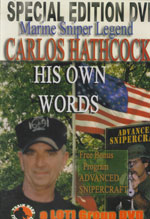
Carlos Hathcock: In His Own
Words
Learn More >
Order Now!

Hand to Hand Combat for Police
Officers
Learn More >
Order Now!
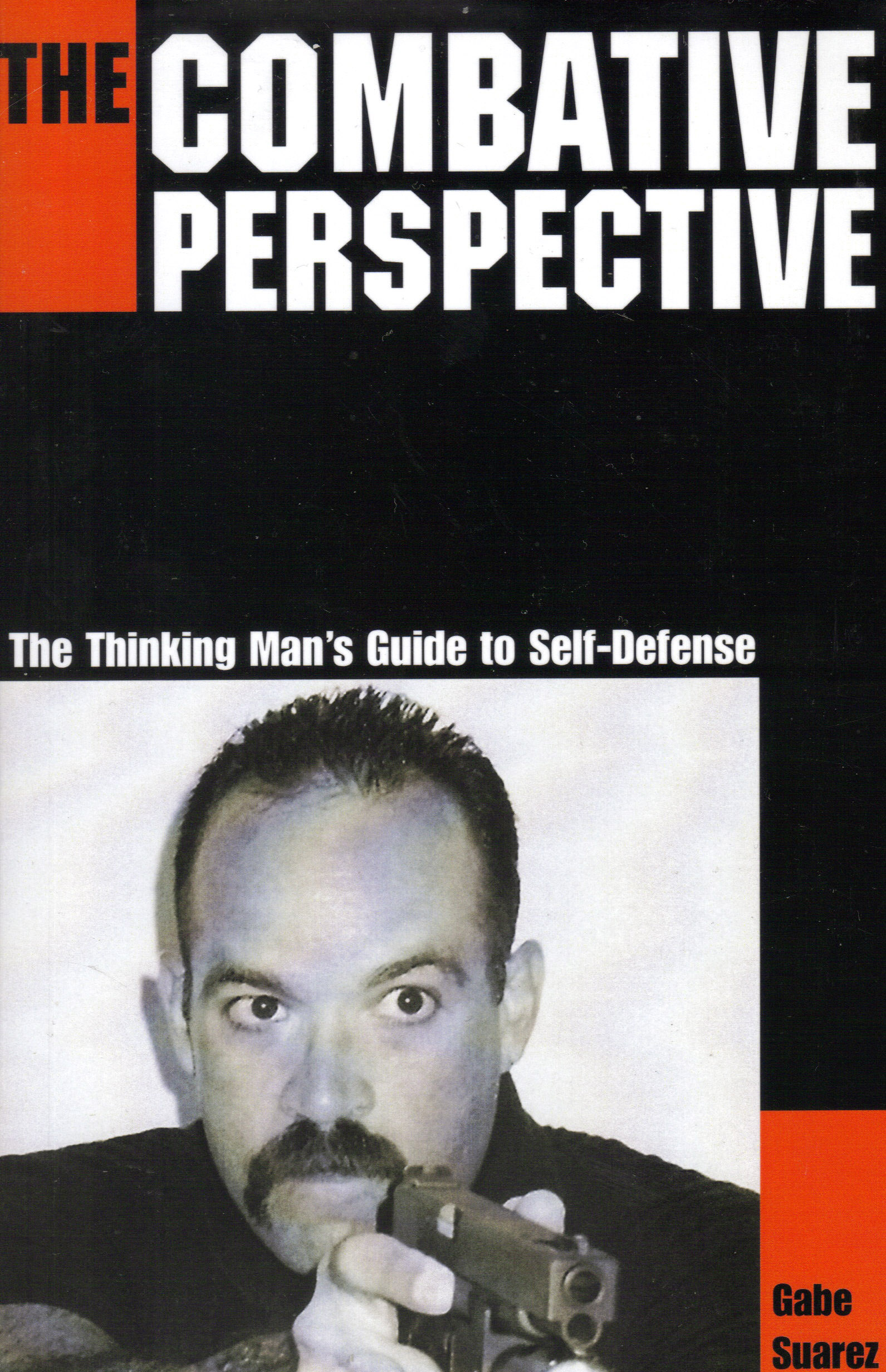
The Combat Perspective: A Thinking Man's Guide
to
Self-Defense
Learn More >
Order Now!
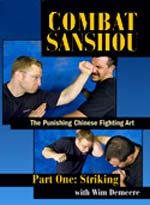
Combat Sanshou: Striking
Learn More >
Order Now!

Deadly Force Encounters
Learn More >
Order Now!

Real Fighting
Learn More >
Order Now!
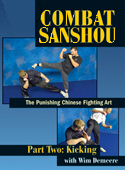
Combat Sanshou: Kicking
Learn More >
Order Now!

Real World Self-Defense
Learn More >
Order Now!

Surviving a Street Knife Attack
Learn More >
Order Now!
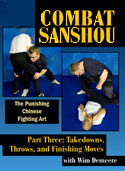
Combat Sanshou:
Takedowns/Throws
Learn More >
Order Now!

CQB Clearing Tactics For First
Responders/ Patrol Tactics for 911 Officer
Learn More >
Order Now!

Cute Lawyer Tricks
Learn More >
Order Now!

Warriors: On Living with
Courage, Discipline and Honor
Learn More >
Order Now!

Taking It to the Streets
Learn More >
Order Now!

Tactical Shotgun
Learn More >
Order Now!

TACSAFE
Learn More >
Order Now!

StressFire
Learn More >
Order Now!

StressFire: Handgun
Learn More >
Order Now!

Street Fighting Essentials
Learn More >
Order Now!
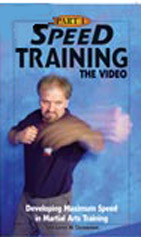
Speed Training: The
DVD
Learn More >
Order Now!

Speed Training
Learn More >
Order Now!

Ending Violence Quickly
Learn More >
Order Now!

Pool Cues, Beer
Bottles and Baseball Bats
Learn More >
Order Now!

Cheap Shots, Ambushes and Other
Lessons
Learn More >
Order Now!
| About navigating this site | Animal List | Bibliography | Bullies | Burglary while on vacation | Classes in Colorado | Car Jacking | Children and Martial Arts | Child Safety | Criminal Mindset | Cults in MA/SD | De-Escalation | E-mail Dianna | E-mail Marc| FAQs | Have MacYoung speak about crime avoidance | Home Page | Home Defense | Hosting a Seminar | Fear | Five Stages of Crime | Knife Fighting | Legal Issues | LEO/Correctional Officer/EMS | Linking policy | Links | Martial Arts | Photo Gallery | Property Crime | Psychology | Rape | Robbery | Safe Dating | Self-Defense Training | Selling your books/DVDs on NNSD | Seminar Schedule | Stalking/Domestic Violence | Street Fighting | Terms of Use | Testimonials | Train with Marc MacYoung | Who is Dianna Gordon MacYoung? | Who is Marc "Animal" MacYoung? | Victimhood | Workplace Problems | Zero Tolerance | ||
| ? 1998-2008 No Nonsense Self-Defense, LLC. All rights reserved. |